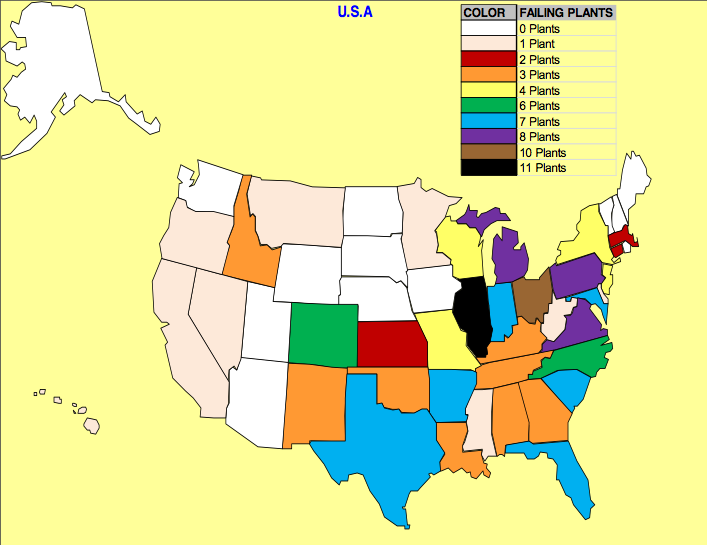The unequal burden of coal plant pollution
Nearly six million U.S. residents live within three miles of a coal-burning power plant — but those heavily polluting facilities are not distributed equally throughout the population.
As a new report from three racial justice advocacy groups shows, coal plants are disproportionately located in low-income communities and communities of color:
* People living within three miles of a coal plant have an average per capita income of $18,400 — significantly lower than the U.S. average of $21,587.
* While people of color make up 36 percent of the total U.S. population, they represent 39 percent of those living within three miles of a coal plant. And coal plants in urban areas are overwhelming located in communities of color.
Those are among the findings of "Coal Blooded: Putting Profits Before People," a report by the national NAACP, the Minnesota-based Indigenous Environmental Network and Little Village Environmental Justice Organization of Chicago. The study focuses on air emissions of sulfur dioxide and nitrogen oxide pollution, which have been linked to health problems including asthma, lung inflammation, chronic bronchitis, heart conditions and birth defects.
"Coal pollution is literally killing low-income communities and communities of color," said NAACP President and CEO Benjamin Todd Jealous.
The report examines 378 coal-fired power plants based on what the report calls their "Environmental Justice Performance" — a score based on both pollution and demographic factors including race, income and population density.
It singles out 75 plants that get failing grades from an environmental justice perspective, meaning they have an especially disproportionate impact on low-income people and people of color. While those plants produced just 8 percent of U.S. electricity in 2005, they accounted for 14 percent of the sulfur dioxide emissions and 13 percent of the nitrogen oxide emissions from U.S. power plants.
Of those 75 plants, 22 are located in southern states: five in Virginia, four each in North Carolina and South Carolina, three in Florida, two in Alabama, and one each in Georgia, Louisiana, Tennessee and Texas. Illinois leads the nation in failing plants from an environmental justice perspective, with nine.
The report also looked at the environmental justice performance of individual power companies, singling out 12 that received failing grades. They include Charlotte, N.C.-based Cogentrix, a wholly-owned subsidiary of The Goldman Sachs Group; Dominion Resources of Richmond, Va.; Duke Energy of Charlotte, N.C.; GenOn Energy of Houston; and Southern Company of Atlanta.
In terms of solutions, the report notes that emissions controls can "substantially mitigate public health damage" caused by coal-burning power plants. However, it concludes that such controls are not enough.
"There is no silver bullet that will make these plants clean -- the only truly effective way to stop coal fired power plants from polluting the communities in which they are located is to close them," it states.
In order to do that, the report argues, anti-coal climate activists need to build bridges with and take direction from local environmental justice advocates and to be willing to modify their goals, strategies and messaging to better reflect those of communities most affected by coal plants.
Tags
Sue Sturgis
Sue is the former editorial director of Facing South and the Institute for Southern Studies.

